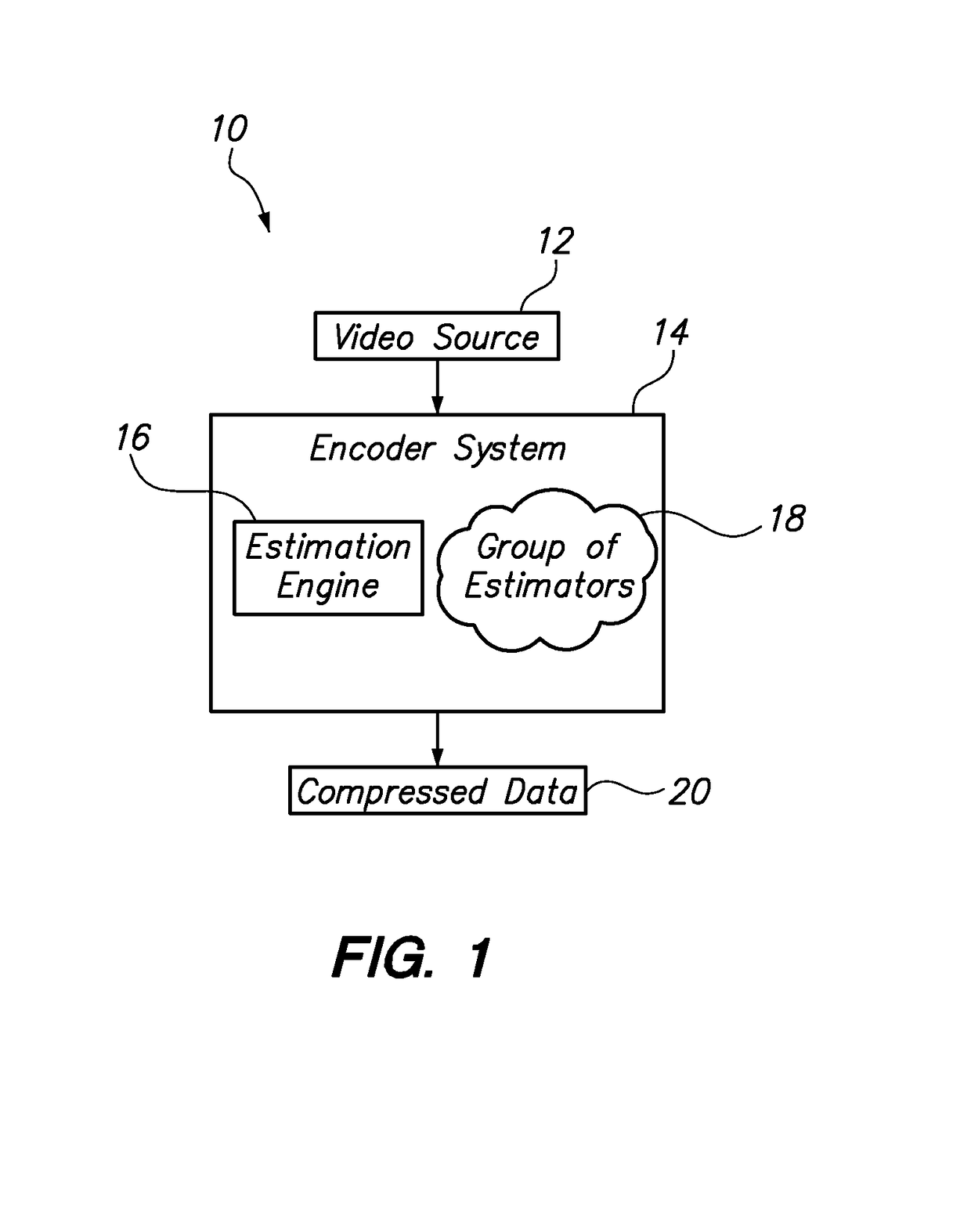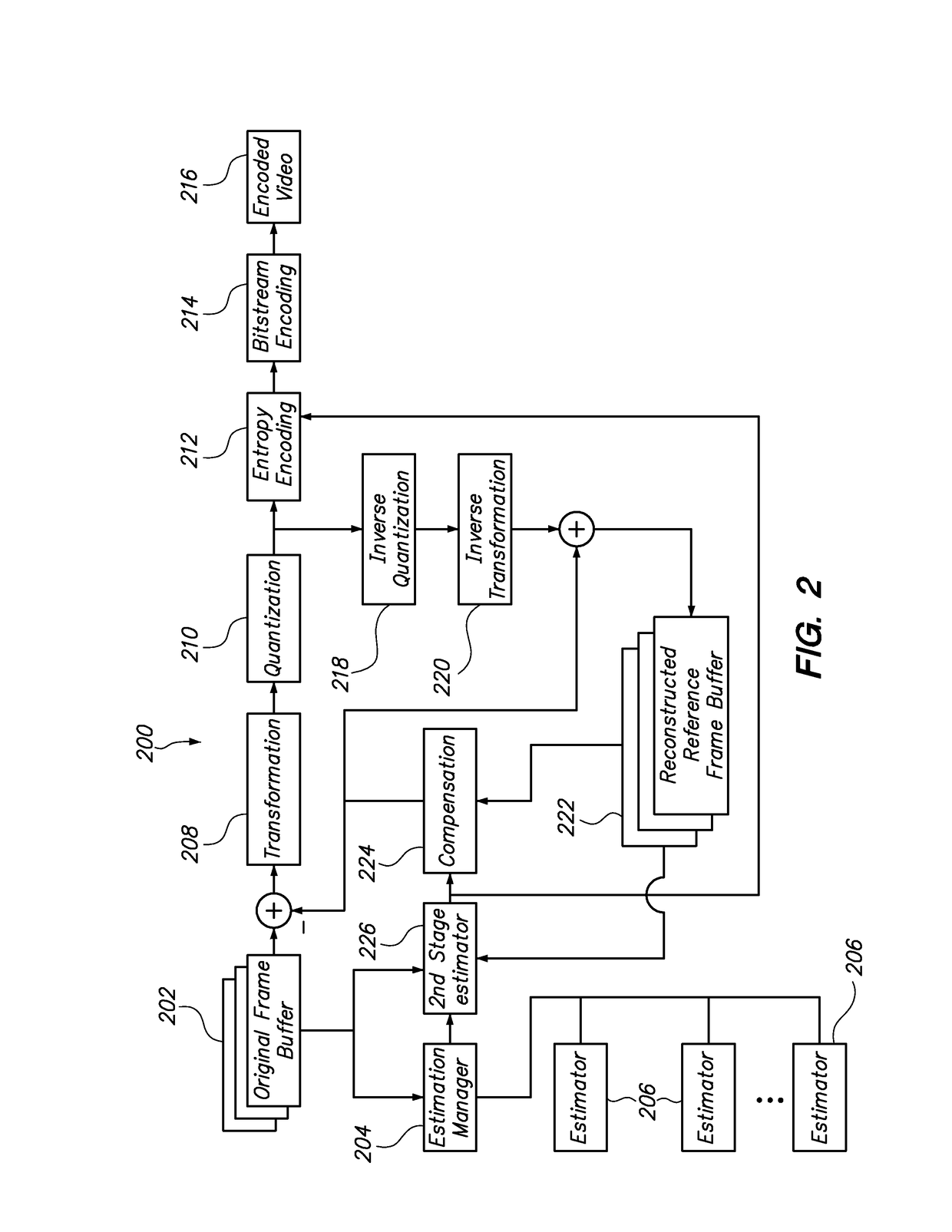Method and system for parallelizing video compression
a video compression and video technology, applied in the field of parallel video compression, can solve the problems of high computational intensity, time-consuming video compression step, and high processing time required for the compression process, so as to reduce the time required for video compression and improve the quality of the compression
- Summary
- Abstract
- Description
- Claims
- Application Information
AI Technical Summary
Benefits of technology
Problems solved by technology
Method used
Image
Examples
Embodiment Construction
[0026]Described herein are methods and apparatuses that allow very large scale parallelization of video data motion estimation that is highly scalable among multiple systems in a distributed system. The method and apparatus also allow similar parallelization of video data spatial estimation.
[0027]Motion estimation tasks are independent and executed in parallel among multiple frames or group of pictures (GOP) by distributed resources. The motion estimation bases the reference off the original frame so as to eliminate inter-frame dependence. The encoder distributes motion estimation processes to multiple resources where each system acquires one or more current frames to perform motion estimation, and their corresponding original reference frames. A video frame can be broken down in subsets of subframes or blocks. The parallelization can be done at different levels including the subframe level or a group of blocks.
[0028]For a given encoder, assume, by way of example, that if each frame...
PUM
 Login to View More
Login to View More Abstract
Description
Claims
Application Information
 Login to View More
Login to View More - R&D
- Intellectual Property
- Life Sciences
- Materials
- Tech Scout
- Unparalleled Data Quality
- Higher Quality Content
- 60% Fewer Hallucinations
Browse by: Latest US Patents, China's latest patents, Technical Efficacy Thesaurus, Application Domain, Technology Topic, Popular Technical Reports.
© 2025 PatSnap. All rights reserved.Legal|Privacy policy|Modern Slavery Act Transparency Statement|Sitemap|About US| Contact US: help@patsnap.com



